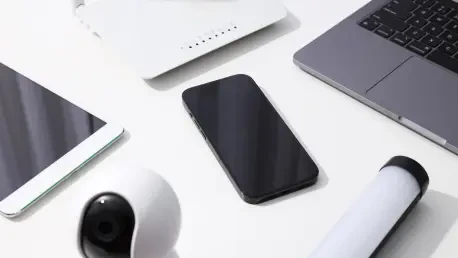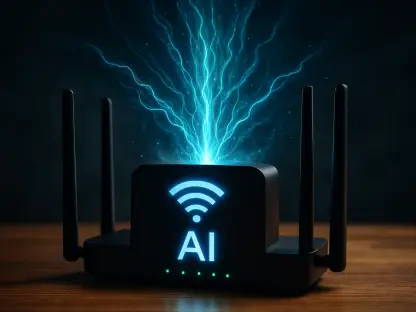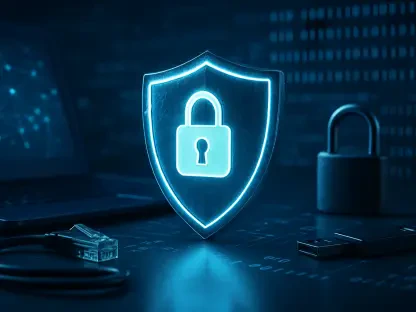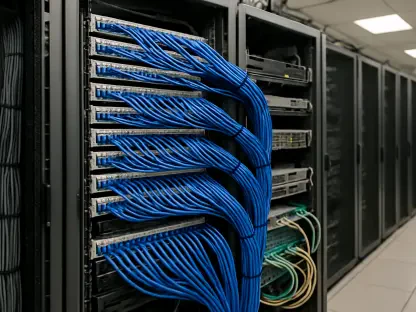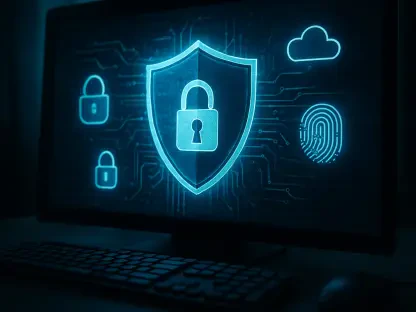The Internet of Things (IoT) has significantly transformed how society interacts with technology, offering unparalleled convenience and connectivity through everyday devices. However, this innovation leads to a substantial increase in data collection that extends well beyond the owner’s direct control. Numerous IoT devices, from smartphones and connected automobiles to home appliances and wearables, autonomously gather data about their surroundings, raising profound questions about privacy. These devices frequently collect and transmit data over the internet without requiring active user involvement, creating a scenario where both users and non-users may unknowingly become part of vast networks of information. The ramifications of this autonomous data collection are far-reaching, affecting individuals’ privacy even when they do not own or interact directly with the devices in question. By analyzing notable cases and exploring the implications for bystanders, this article seeks to unravel the complex web of privacy challenges presented by IoT devices.
The Intricacies of Data Collection Automation
Modern IoT devices are capable of collecting a wealth of data autonomously, often without any explicit consent from the individuals involved. These devices are designed to enhance user experience through smart technology and continuous connectivity, but such advancements come with significant privacy trade-offs as they operate largely beyond direct human oversight. For instance, a car equipped with IoT technology can continuously track movement, log locations, and record interactions without any conscious input from its occupants. This capability poses a unique privacy challenge: data captured by these devices can be used for purposes never intended by the individuals involved, potentially leading to grave invasions of privacy.
Such scenarios are not merely hypothetical; real-world examples have highlighted the implications of this autonomous data collection. In the widely publicized case of Alex Murdaugh, IoT data played a pivotal role in tying the suspect to a crime scene, demonstrating how these devices can serve as critical evidence. This incident underscores not only the investigative utility of IoT data but also the sheer scope of surveillance potential embedded in everyday environments. Even as IoT devices offer conveniences, their surveillance capacities and data collection may occur without explicit user awareness or consent, often leaving individuals uninformed about how their data is utilized or who has access to it.
Against this backdrop, current IoT practices point to a broader issue: the sheer volume of data autonomously collected poses challenges to personal privacy. IoT devices often operate in shared environments, capturing data that pertains to numerous individuals besides their owners. This raises ethical questions about ownership, control, and responsibility regarding collected information and the potential for data misuse. In environments where connected devices predominate, privacy concerns become evident as traditional notions of controlling personal data ownership fall short. Without robust and standardized privacy regulations, the privacy implications of IoT data collection remain fraught with challenges that need urgent attention and deliberation.
Privacy Concerns Beyond the Device Owner
The privacy implications of IoT extend beyond individual ownership, affecting anyone who might come into indirect contact with a connected device. The data collected often includes information on individuals who have no direct interaction with the devices, resulting in data collection that is both pervasive and indiscriminate. For example, a smart doorbell or a connected security camera may capture the comings and goings of neighbors, delivery personnel, and other nondiscerning passersby. This inadvertently enlists them into the data collection ecosystem, challenging the concept of consent.
These privacy issues have amplified concerns about the ethical use and governance of IoT, particularly regarding how third parties might exploit freely captured data. Entities such as advertisers, data brokers, and even governmental agencies have access to these data riches, using them for varied purposes ranging from targeted advertising to more sinister surveillance activities. Such access is often outside the knowledge or control of both device owners and the unwitting subjects captured by these devices. This widespread collection and potential misuse of peripheral data exemplify how IoT devices challenge traditional privacy norms and underscore the need for more comprehensive regulatory oversight to protect individuals.
Despite the rapidly growing IoT ecosystem, regulations concerning data privacy and security remain fragmented and inadequate. In contrast to healthcare IoT devices, which are subject to strict standards protecting sensitive information, consumer IoT devices typically lack mandatory privacy safeguards. Programs like the U.S. Cyber Trust Mark aim to establish baseline security standards but fall short of being legally binding. This leaves considerable room for vulnerability, with data potentially accessible to malicious actors or used in ways that individuals did not anticipate and did not consent to. Thus, the need for regulatory frameworks that encompass the broader scope of IoT data usage becomes increasingly paramount.
Revisiting Privacy Laws and Regulations
As IoT devices continue to embed themselves deeper into the fabric of daily life, the discrepancy between data capture and protection mechanisms becomes glaringly apparent. Unlike data controlled under traditional healthcare privacy laws, IoT data lacks a comprehensive legislative framework to protect against unauthorized access and misuse. This provides an inadequate shield against privacy invasions, as many consumer IoT devices exist outside of stringent regulatory oversight. Notably, current measures, such as the voluntary U.S. Cyber Trust Mark, reflect an initial, albeit insufficient, step towards establishing trust and security standards for IoT devices.
The challenge remains to develop regulatory strategies that effectively bridge these gaps and ensure that IoT data privacy is maintained on par with other protected information sectors. This necessitates a reevaluation of existing privacy regulations and the formulation of new mandates that account for the unique characteristics and potential risks inherent in IoT systems. Policymakers must consider comprehensive legislation that mandates security standards for IoT devices, providing protections not merely for data directly linked to user ownership but also for incidental data collected from bystanders.
A significant aspect of this regulatory endeavor involves the definition and enforcement of consent, transparency, and accountability within the IoT landscape. Consumers deserve the right to be informed about how their data is collected, who may have access to it, and for what purposes. Transparency in data practices should extend to implications for those not directly engaging with IoT devices, as they remain vulnerable to data collection and subsequent exploitation. In this context, regulatory bodies must enforce clear guidelines and penalties for violations to safeguard personal information further and restore public trust in connected device ecosystems.
Broader Societal Implications and Future Directions
The pervasive use of IoT technology is shaping a new societal paradigm where privacy is increasingly challenging to delineate and defend. As connected devices proliferate across numerous sectors, including health monitoring, urban infrastructure, and smart homes, the inherent trade-offs between convenience and the protection of personal information become more pronounced. While these technologies offer remarkable benefits, from increased efficiency to enhanced lifestyle experiences, they also introduce a matrix of privacy risks that need to be judiciously managed.
Addressing the broader societal implications requires engaging with technological literacy, encouraging informed usage, and advocating for the rights and responsibilities of organizations utilizing IoT data. This includes fostering an understanding of the ethical dimensions of data collection processes among stakeholders and reinforcing the concept of privacy as a fundamental human right. Aligning technological advancements with privacy safeguarding strategies becomes crucial as IoT technologies evolve and expand. Innovators, legislators, and users must collaborate to ensure technology development adheres to ethical standards and respects user privacy.
Looking ahead, the need for dedicated research on privacy-preserving IoT technologies is pressing. Advancements in data encryption, anonymization, and user-centric privacy controls should be at the forefront of IoT innovation, providing tools for individuals to manage their data footprint effectively. Furthermore, governments and organizations should prioritize public engagement and transparency to build a more robust framework aligning technological progress with societal expectations of privacy. By doing so, broader acceptance and positive outcomes can be achieved, securing the benefits of IoT while safeguarding the rights of individuals in an interconnected world.
Conclusion: Toward a Privacy-Responsive IoT Era
The widespread adoption of IoT devices is reshaping data collection patterns, often taking place without explicit consent from those affected. These devices are designed to improve user experiences through smart technology and seamless connectivity, but they present significant privacy challenges due to their autonomous operations beyond human supervision. Consider IoT-enabled vehicles that can track movements, log locations, and record interactions without occupants being aware. This capability presents a privacy dilemma; collected data can be used for unintended purposes, possibly compromising personal privacy severely.
This is not merely a theoretical concern. Real-world incidents, like the Alex Murdaugh case, illustrate the investigative power of IoT data in linking suspects to crime scenes. These cases demonstrate the dual nature of IoT devices: offering convenience while harboring extensive surveillance capabilities that users aren’t always aware of. The extensive autonomous data collection by IoT devices challenges personal privacy rights, especially in shared environments where data pertaining to multiple individuals can be captured.
Questions arise regarding ownership, control, and ethical responsibility for the collected data. As connected devices become more prevalent, traditional methods of safeguarding personal data falter. The lack of robust, universal privacy regulations only exacerbates the challenges surrounding IoT data collection, necessitating urgent action to address these privacy concerns in a rapidly evolving landscape.
